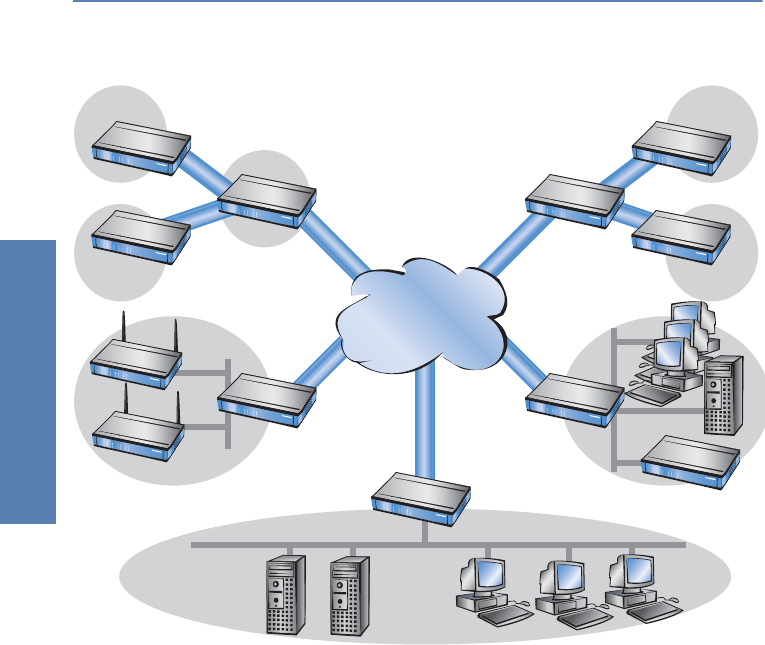
LANCOM Reference Manual LCOS 3.50 ̈ Chapter 4: Management
40
Management
In this example, a service provider monitors the networks of different clients
out of a central control. For this purpose, the SNMP-capable devices should
send the respective traps of important events automatically to the SNMP trap
addressee (e. g. LANmonitor) of the network of the service provider. So the
LAN administrator of the service provider has an up-to-date view of the state
of the devices at any time.
The individual networks can be structured very differently: Clients A and B
integrate their branches with own networks via VPN connections to their LAN,
client C operates a network with several public WLAN base stations as hot
spots, and client D has got an additional router for ISDN dial-up accesses in
his LAN.
Gateway
VPN
tun
n
el
Internet
GatewayGateway
Customer C:
172.16.10.x, 255.255.255.0
Customer A, office 1:
10.1.2.x, 255.255.255.0
Customer A, office 2:
10.1.3.x, 255.255.255.0
VPN tunnel
Customer A, headquarters:
10.1.x.x, 255.255.0.0
Customer B, office 1:
10.1.2.x, 255.255.255.0
Customer B, office 2:
10.1.3.x, 255.255.255.0
Customer B, headquarters:
10.1.x.x, 255.255.0.0
Customer D:
172.16.10.x,
255.255.255.0
Service provider:
172.16.10.x,
255.255.255.0
Hot Spot, e.g.
172.16.10.11
Gateway, e.g.
80.123.123.123 (public)
and 172.16.10.11 (intern)
Gateway, e.g.
10.1.2.1


















